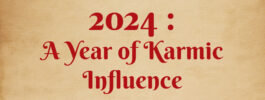The Vedas are the religiously sacred texts which show the path of life and defines the term ‘knowledge’ or ‘wisdom.’ As per our knowledge, Vedas are of four types – Rigveda, Yajurveda, Samved, and Atharvaveda. But if we go through the ancient scriptures, we will know that ages ago, there was only one Veda.
The four types of Vedas are the classification of that one founded or established Veda. Let’s understand the types of Vedas in detail.
Vedas are also called ‘Shruti.’ The term Shruti was given because Rushi-Muni first heard Vedas while in a meditative state. And they used to memorize it for ages. At that time, there were no written texts, so they had to spread the knowledge of Vedas through words and utterances. And based on that pronunciation, the Vedas are divided into three parts. As we all know, if we classify the language we speak in the context of articulation, it will be organized into three parts.
1. Gadhya (text)
2. Padhya (poetry)
3. Gaan (song)
ऋक् नियत पदाक्षर अवसानम्।
– निरुक्त ग्रन्थ्
A Veda with specific alphabets in the form of padhya or written characters is called ‘Rigveda.’ In Nirukt scripture, the same has been stated :
ऋक् नियत पदाक्षर अवसानम्।
– निरुक्त ग्रन्थ्
‘If the number of words in the sentence is not fixed, the verse which is in the form of prose is called ‘Yajur Veda.’ In Nirukt scripture, the same has been stated :
यजु: अनियत पदाक्षर अवसानम्।
– निरुक्त ग्रन्थ्
Mantras or Verses that could be sung like a song are called Sam Veda. In Nirukt scripture, the same has been stated :
साम: स्यति निरस्यति गानेन पापानि।
– निरुक्त ग्रन्थ्
Due to the classification of Vedas based on pronunciation, many ancient scriptures say that there were only three Vedas – Rigveda, Yajurveda, and Samveda. There is a fourth Veda which is called Atharva Veda. Just because Atharva Veda has mantras and verses, all combinations of Gadhya, Padhya, and Gaan, it has not been counted or mentioned by many ancient scriptures. To reveal this, let’s see a mantra from ‘Purush Sukt.’
तस्मात् यज्ञात् सर्वहुत: ऋच: सामानि जज्ञिरे।
छन्दान्सि जज्ञिरे तस्मात् यजुस्तस्मादजायत।।
– पुरुष सूक्त
Satpat Brahman has also said the same. Agni, Vayu, and Surya have gained knowledge of Vedas by doing penance. The Shloka given by Satpat Brahman is :
तेभ्य: तप्तेभ्य: त्रयो वेदा अजायन्त:।
अग्नेर् ऋग्वेदो वायोर् यजुर्वेद: सूर्यात् सामवेद:।।
– शतपथ ब्राह्मण
“Vayu (air) attained the knowledge of Yajur Veda, Surya (sun) attained the knowledge of Sam Veda, and Agni (fire) attained the knowledge of Rig Veda.”
Aacharya Puspdant has also said Vedas are three Shiv Mahima Stotram. The Shloka given is :
त्रयी साङ्ख्य योग: पशुपतिमतं वैष्णवमिति।
– शिव महिम्न स्तोत्र
While the Vedas were memorized, they were called ‘Ved Trayl.’ Because Atharva Ved has all three kinds of verses – Padhya, Gadhya and
Gaan. As the Dwapara era ended, Ved Vyas Ji classified the Vedas and made texts out of them, or we can also say that he wrote the Vedas. Vyas Ji was named as Ved Vyas after he wrote the Vedas and classified them. Let’s have a look at Verse from Mahabharata :
विव्यास वेदान् यस्मात् स वेदव्यास इति स्मृत:।
– महाभारत
Not only this, even in Shrimad Bhagavad Puran, it has been mentioned in detail. Let’s have a look at the given verse :
चातुर्होत्रं कर्म शुद्धं प्रजानां वीक्ष्य वैदिकम्।
व्यदधाद्यज्ञसन्तत्यै वेदमेकं चतुर्विधम्॥
त एव वेदा दुर्मेधैर्धार्यन्ते पुरुषैर्यथा।
एवं चकार भगवान्व्यासः कृपणवत्सलः॥
This means that Ved Vyasji wrote Vedas so that the people can get benefits from it and people who have low memory can attain the knowledge of Vedas. For more benefit of people, Ved Vyasji classified Vedas into four parts. He divided one Veda into four parts and classified them according to their subject. Ved Vyasji did not name them, but he classified them.
A commentator of Yajur Veda, Mahidhar. He has presented this very nicely with the verse :
तत्रादौ ब्रह्म परम्परया वेदं वेदव्यासो मन्दमतिन्
मनुष्यान् विचिन्त्य तत् कृपया चतुर्धा व्यस्य
ऋग्यजु: सामाथर्वा आख्या: चतुरो वेदान्
पैल – वैशंपायन – जैमिनी – सुमन्तुभ्य: क्रमात् उपदिदेश।
– यजुर्वेद भाष्य, महिधर
“It depicts that knowing the Vedic tradition from Brahma, Ved Vyas classified Vedas into four parts; Rig, Yajur, Sam, Atharva, and named them in slow-witted. Preached to Pail, Vaishampayan, Jaimini, and Samanu.”
Veda was only one, but when it was categorized in the context of pronunciation, it was classified as three types of Vedas named as Padhya, Gadhya, and Gaan. And after that, when Ved Vyas Ji classified them, he divided the Vedas into four parts.
So, if today someone asks us, how many Vedas are there? We answer it as four Vedas – Rigveda, Yajurveda, Samveda, and Atharvaveda. There is even a verse given in Garuda Puran which says that was only one Veda. Let’s have a look at the verse :
एकैवासित् यजुर्वेद: तम् चतुर्धा: व्यवर्तयत्।
– गरुड पुराण
So, the conclusion is that the Veda was only one when created or found, but as the ages passed by, it firstly got classified into three parts based on pronunciation. Further, at the end of the dwarpa period, it was classified into four parts by Ved Vyas Ji.









Comments (2)
confection
January 6, 2023 at 1:08 pmI ѡanted to thank you for this great rеad!! I certainly enjoyed every
bіt of it. I’ve got you book-marked to look at new
things you post…
Decoding the Vedas : Understanding Their True Significance -
July 21, 2023 at 4:21 am[…] In other words, Ishtha, or “desired,” refers to the attainment of what we want, i.e., desire fulfillment. And Anishta, or “undesired,” refers to the removal of what we do not want, i.e., the elimination of undesirable things or circumstances. The extraordinary means that scripture teaches us for achieving desire fulfillment and removing undesirable elements is called the Vedas. […]